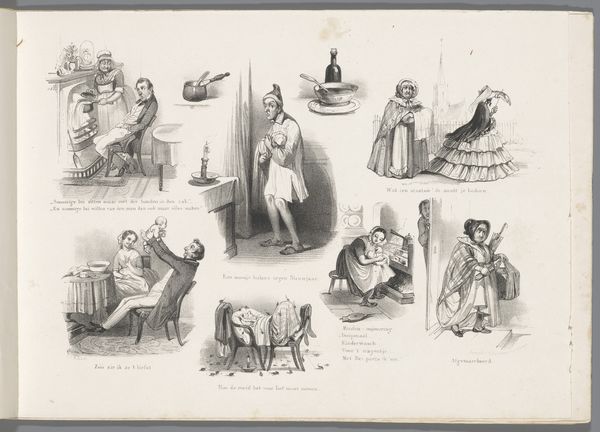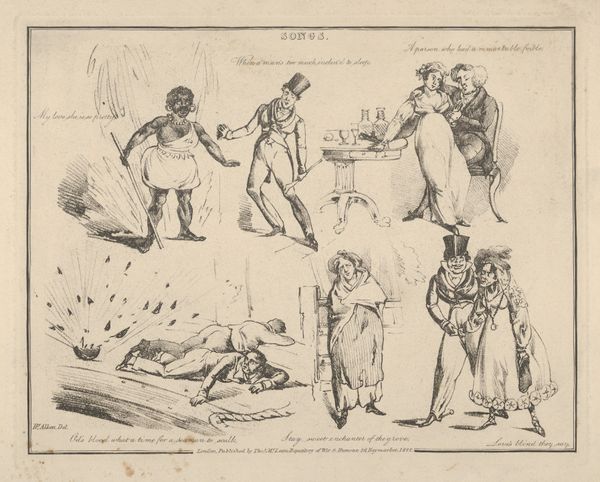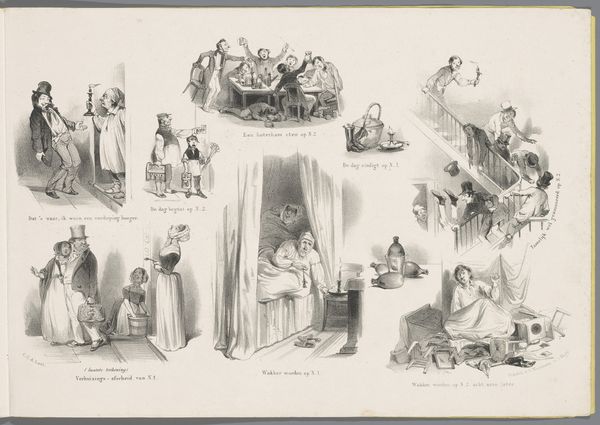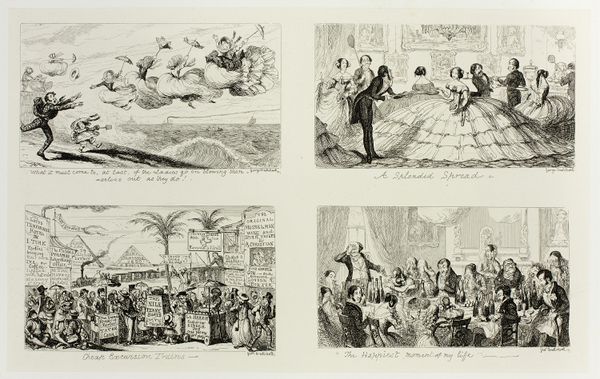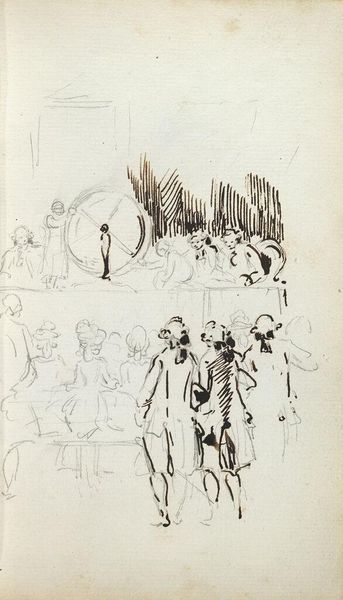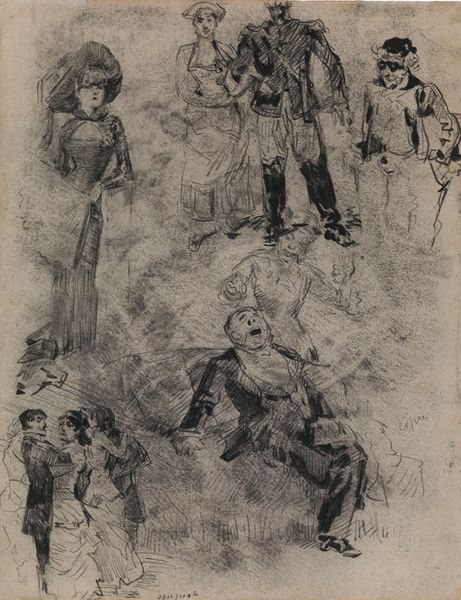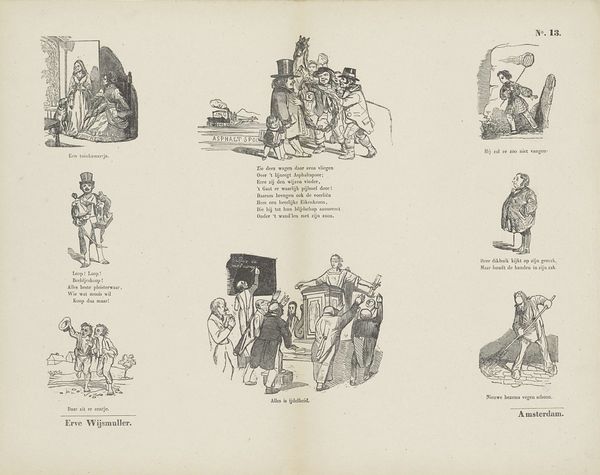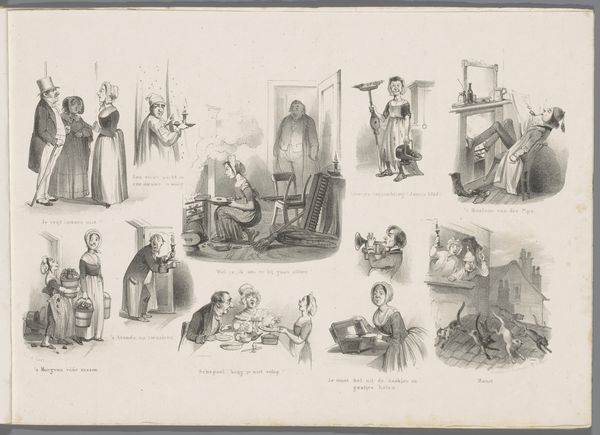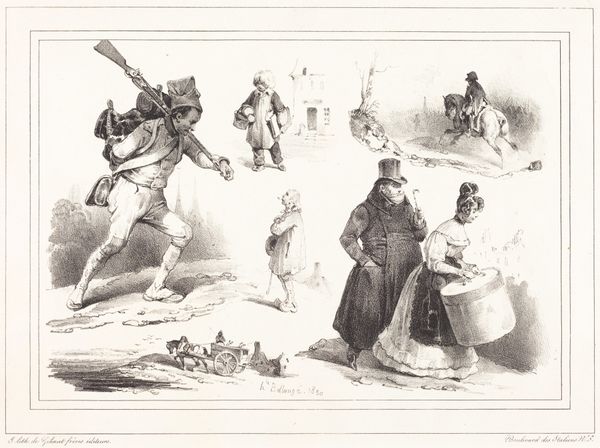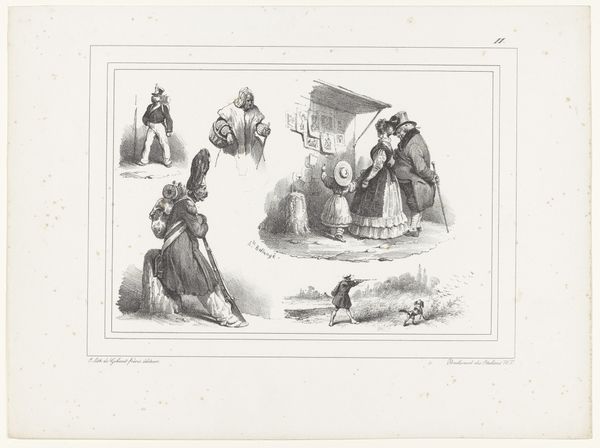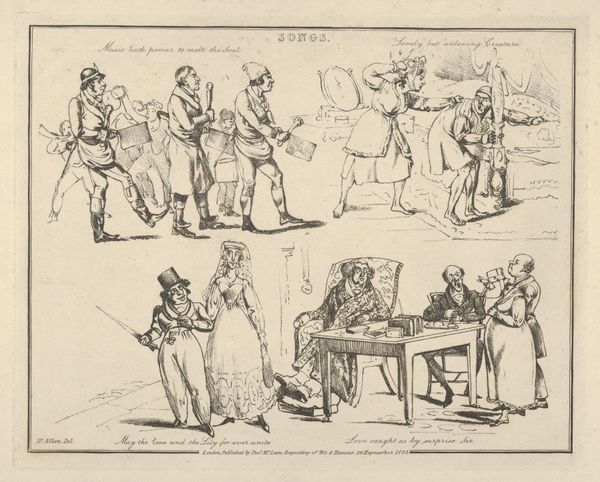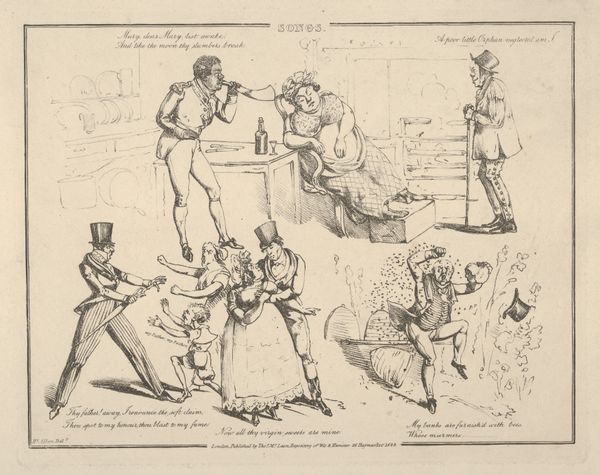
drawing, print, pencil
#
portrait
#
drawing
#
narrative-art
# print
#
pencil sketch
#
figuration
#
pencil
#
genre-painting
Dimensions: sheet: 26.5 x 34.8 cm (10 7/16 x 13 11/16 in.)
Copyright: National Gallery of Art: CC0 1.0
Editor: This is "Five Vignettes," a pencil sketch and print made in 1831 by Hippolyte Bellangé. I'm struck by how each little scene tells its own story, almost like panels in a graphic novel. What do you see in the ways these small vignettes operate within the cultural landscape of the time? Curator: It’s interesting that you describe it as panels of a graphic novel, highlighting how Bellangé attempts to capture a narrative in each vignette. The piece as a whole becomes a cultural document, displaying varying social classes from soldiers to domestic scenes, and how people occupy their respective places in French society. Who has the power here and how is it visually manifested? Editor: It’s certainly true that social class permeates each image. I guess in that sense, how would someone from that period receive the message that the vignettes try to tell in this arrangement? Would they understand all of these representations? Curator: That is the question the piece itself proposes. By placing these seemingly unrelated images next to each other, Bellangé challenges us to question the socio-economic divisions. Do the scenes function in isolation? Are the narratives inherently gendered and/or classed? Is there an implicit political commentary present by depicting some lives over others? Editor: Thinking about the scenes this way makes me see the composition from another point of view. Initially, it just felt like separate observations of daily life, but it's also more like an artist displaying commentary through different means than typical portraits or history painting. Curator: Exactly. Bellangé uses genre scenes to comment on larger social issues and power dynamics that affect people beyond their personal bubbles, something that’s still pertinent in contemporary artistic discourse. Editor: That puts the work in an important context, as something intentionally produced to elicit the different strata in that period, while simultaneously documenting and critiquing them. Curator: Precisely. It invites us to consider who gets represented, how, and to what end. That makes Bellange not just an artist but a social commentator of his time.
Comments
No comments
Be the first to comment and join the conversation on the ultimate creative platform.

